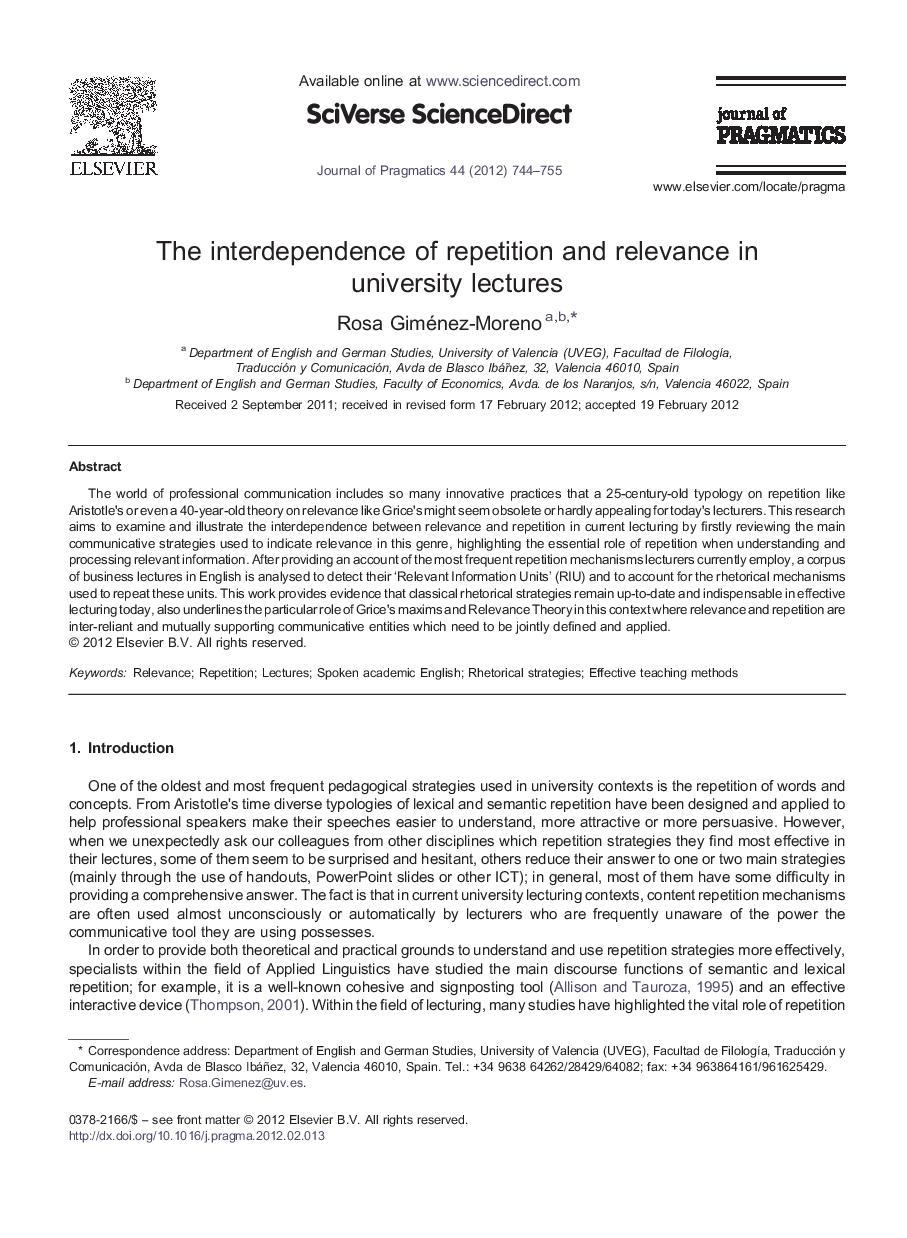| کد مقاله | کد نشریه | سال انتشار | مقاله انگلیسی | نسخه تمام متن |
|---|---|---|---|---|
| 933021 | 1474750 | 2012 | 12 صفحه PDF | دانلود رایگان |

The world of professional communication includes so many innovative practices that a 25-century-old typology on repetition like Aristotle's or even a 40-year-old theory on relevance like Grice's might seem obsolete or hardly appealing for today's lecturers. This research aims to examine and illustrate the interdependence between relevance and repetition in current lecturing by firstly reviewing the main communicative strategies used to indicate relevance in this genre, highlighting the essential role of repetition when understanding and processing relevant information. After providing an account of the most frequent repetition mechanisms lecturers currently employ, a corpus of business lectures in English is analysed to detect their ‘Relevant Information Units’ (RIU) and to account for the rhetorical mechanisms used to repeat these units. This work provides evidence that classical rhetorical strategies remain up-to-date and indispensable in effective lecturing today, also underlines the particular role of Grice's maxims and Relevance Theory in this context where relevance and repetition are inter-reliant and mutually supporting communicative entities which need to be jointly defined and applied.
► Repetition and relevance need to be approached as interdependent concepts in lectures.
► Identification of Relevant Information Units increases control over the contents’ processing.
► Classical rhetorical strategies on repetition remain applicable in lecturing.
► Relevance is dependent on the proportion and adequacy of repetition strategies.
► Lecturers use an average of 175 repetition strategies every half hour.
Journal: Journal of Pragmatics - Volume 44, Issues 6–7, May 2012, Pages 744–755